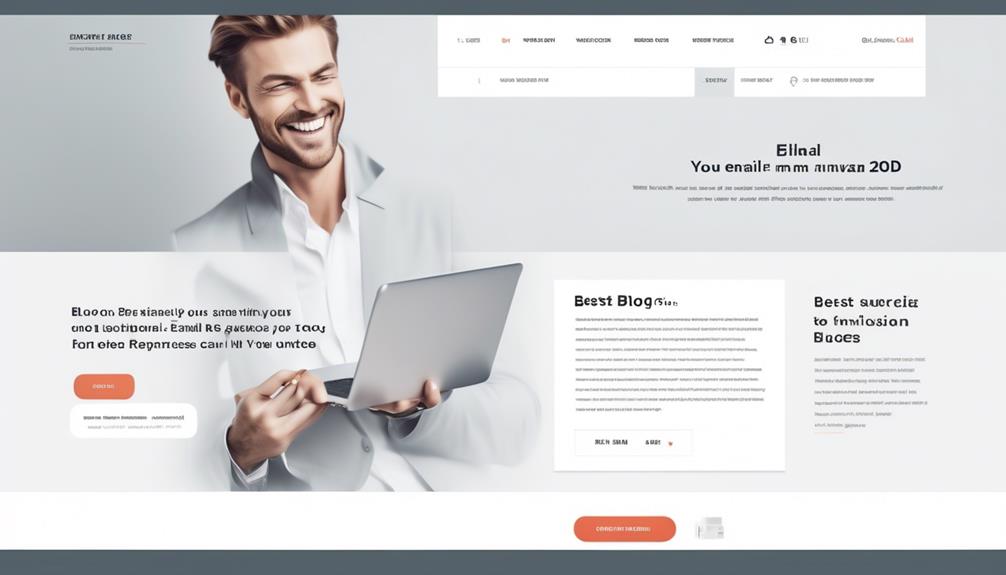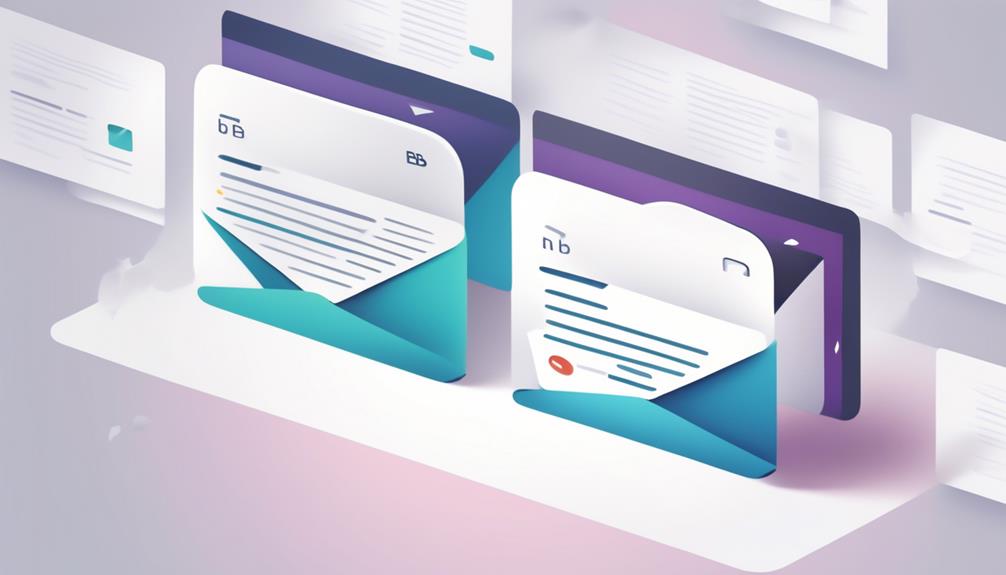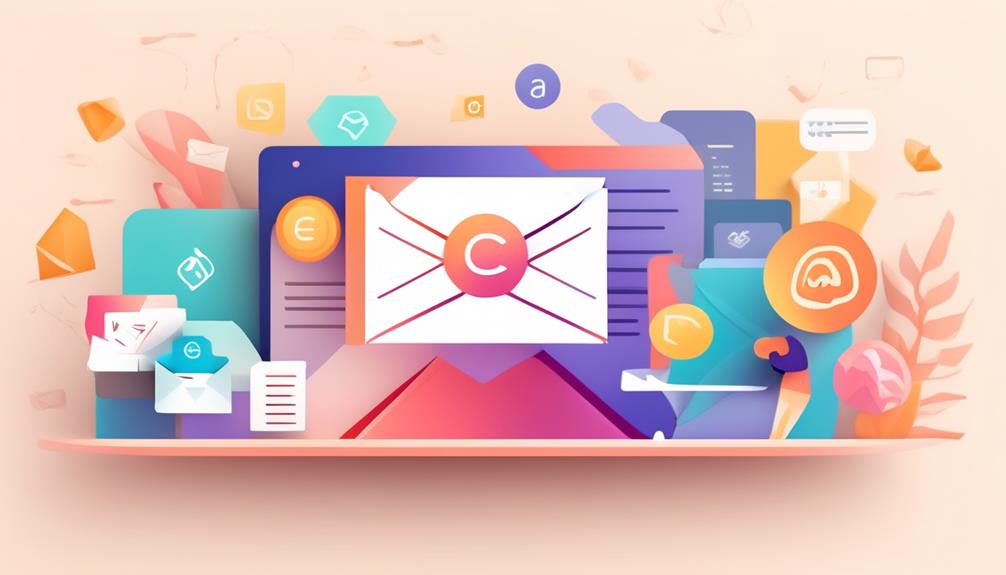As email marketing evolves, the significance of implementing impactful design tactics becomes increasingly crucial. In a crowded digital space filled with rivalries and diversions, it is essential to differentiate oneself and captivate the target audience.
By implementing the 8 best email design practices for 2024, we can significantly enhance the impact and results of our email campaigns. These practices are not only about aesthetics but also about driving engagement and conversion.
Let’s explore how these strategies can elevate our email marketing efforts and ensure success in the upcoming year.
Key Takeaways
- Personalization is key: Use personalized sender names, subject lines, and preheader text to make your emails more relevant and engaging to recipients.
- Keep it concise: Use concise subject lines, preheader text, and email copy to maintain reader engagement and interest.
- Visual appeal matters: Incorporate high-quality images, a defined color palette, and contrasting colors to enhance the visual appeal of your emails.
- Optimize for dark mode: Accommodate dark mode users by adapting your color choices and creating visually appealing email layouts that work well in both light and dark modes.
Sender Name
In 2024, crafting a personalized and relevant sender name is crucial for maximizing email open rates and engaging recipients effectively. The sender name plays a pivotal role in influencing 68% of Americans’ decision to open an email.
When choosing a sender name, it’s vital to consider the preferences of the target audience and ensure that it aligns with the brand identity. By selecting a sender name that reflects the brand voice and resonates with the audience, marketers can enhance brand recognition and increase the likelihood of user engagement.
To create a compelling sender name, it’s essential to strike a balance between being personal, relevant, and concise. By avoiding generic sender names and instead opting for a combination of a staff member’s name and the company’s name, marketers can improve brand recall and establish a stronger connection with recipients.
Furthermore, a well-crafted sender name can significantly impact the success of email marketing campaigns by making marketing emails more visually appealing and increasing the effectiveness of email content. Therefore, investing time and effort into choosing the right sender name is crucial for achieving optimal results in email marketing.
Subject Line
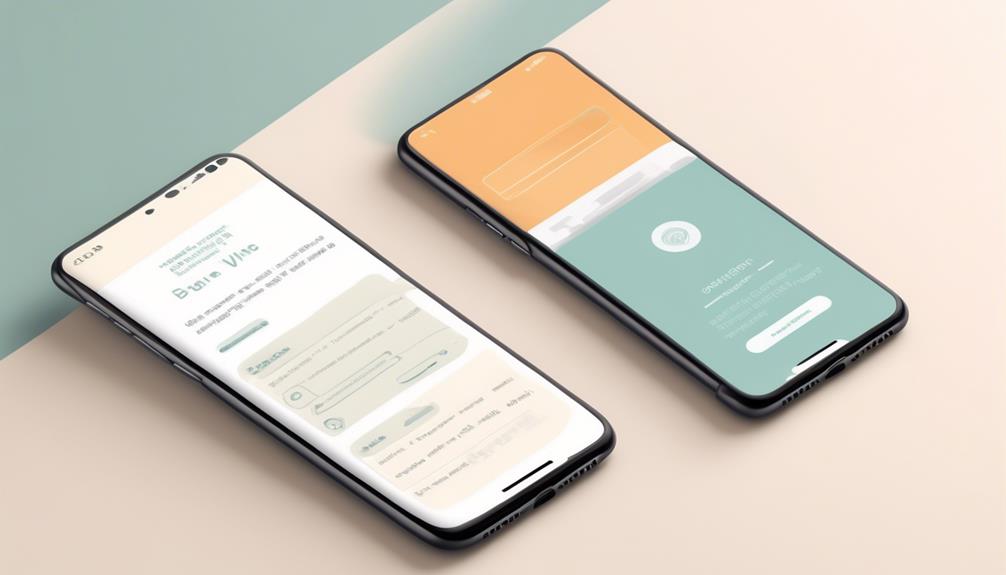
Crafting compelling and engaging subject lines is essential for capturing the reader’s attention and driving higher open rates in email marketing campaigns. In the ever-evolving email landscape, the subject line remains a critical element in optimizing email open rates.
To create an impactful subject line, it’s important to adhere to best practices. Keeping subject lines transparent, honest, and ideally around 41 characters or 7 words in length can maximize open rates. Additionally, incorporating emojis can make subject lines more eye-catching and increase open rates, provided they pique curiosity. Personalizing subject lines to align with the email content is another effective strategy for grabbing the reader’s attention.
A/B testing different subject lines allows for a better understanding of what resonates best with the target audience, ultimately driving higher open rates. It’s crucial to avoid misleading or clickbait subject lines, as they can erode trust and credibility with subscribers.
Preheader
As we aim to captivate recipients and drive higher open rates through compelling subject lines, the preheader emerges as a critical element, providing a preview of the email content and enticing recipients to engage further.
When focusing on email marketing best practices, the preheader should be strategically crafted to extend the impact of the subject line and encourage email opens. To achieve this, we must ensure that the preheader text complements the subject line while adding value, interest, or context to the email’s content. Additionally, personalizing the preheader text can significantly enhance its effectiveness in engaging recipients.
To optimize user experience and leverage email design trends, we should keep the preheader between 30 and 70 characters, ensuring it’s concise and impactful. Moreover, incorporating design elements such as alt text and visual content in the preheader can further enhance its appeal.
As email service providers continue to prioritize responsive emails, it’s crucial to consider how the preheader renders across various email platforms, ensuring its effectiveness on different devices.
Header

Delivering an impactful and visually engaging first impression, the header sets the tone for the email content and entices recipients to delve deeper into the message. When designing the header, it’s essential to incorporate both text and relevant images that align with the brand’s style and the email’s content. The headline should be catchy, providing a glimpse of what the email entails to capture the readers’ attention. Including important links as buttons in the header can also drive engagement and direct readers to specific actions. Moreover, the header serves as a summary of the main gist of the email, giving recipients a preview of what to expect.
To illustrate the components of an effective header visually, consider the following table:
| Component | Description |
|---|---|
| Text and Images | Incorporate both for visual appeal |
| Catchy Headline | Tease the email’s content |
| Actionable Buttons | Include important links for engagement |
| Summary | Give a glimpse of the email’s main message |
Email Copy
Moving from the impactful header to the crucial aspect of email copy, we aim to craft concise and personalized content that resonates with our audience’s preferences and maintains their interest. When it comes to email copy, it’s essential to use language that speaks directly to our audience segment, ensuring that the content is relevant and engaging.
Here are some key points to consider:
- Conciseness and Personalization
- Keep the email copy under 200 words to maintain reader engagement and interest.
- Personalize the email copy to add a sense of relevance and connection with the recipients.
- Design and Readability
- Utilize simple, on-brand, and easy-to-read fonts while limiting the number of fonts used.
- Use sans serif fonts in the body text for improved readability and visual appeal.
Images

We prioritize high-quality, strategically chosen images to enhance the visual appeal and storytelling of our emails. Images play a crucial role in engaging our audience, with 65% of email readers preferring visual content. It’s essential to opt for high-resolution images in PNG format, keeping them under 1MB to maintain fast loading times. Each image should serve a specific purpose, aligning with the email’s message and enhancing its visual storytelling.
When using stock images, we ensure they aren’t overused by competitors to maintain originality and brand identity. Moreover, we consider the readability of text over images and always include alt text for accessibility and improved user experience. By incorporating images thoughtfully, we can capture our audience’s attention and convey our message more effectively.
As we design our emails, we keep these best practices in mind to create visually appealing and engaging content that resonates with our subscribers.
Colors
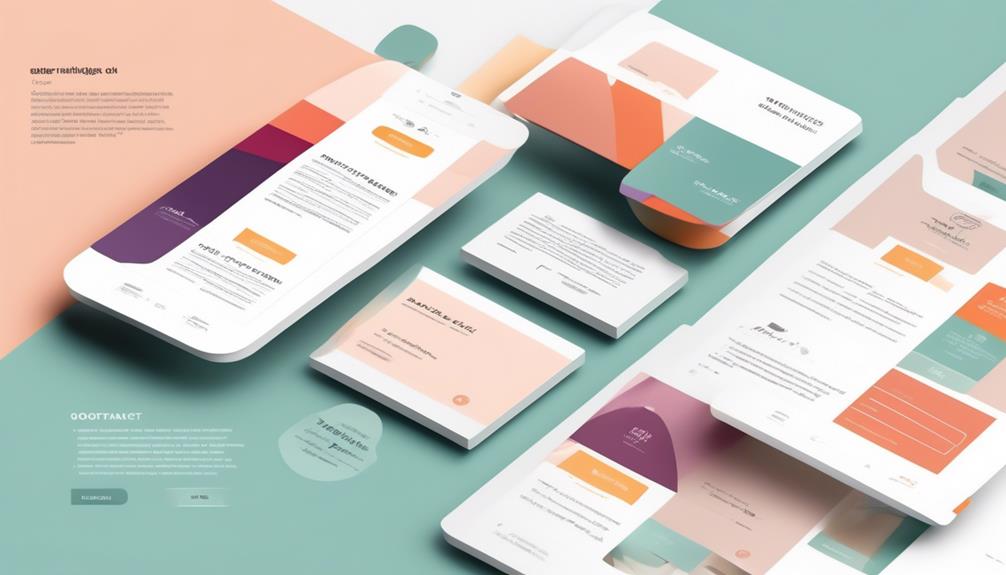
Optimizing the color palette is crucial for creating visually cohesive and impactful email designs that resonate with our audience. When considering the best email design practices, colors play a significant role in enhancing the user-friendly drag and drop experience and overall visual appeal. To achieve beautiful-looking emails, it’s essential to carefully select and implement colors in a strategic manner. Here are some key points to consider:
- Color Palette
- Choose a defined color palette that aligns with our brand and use it consistently throughout our emails.
- Utilize contrasting colors to highlight important sections and create visual interest.
- Visual Appeal
- Avoid using too many colors in the email design to maintain a clean and cohesive look.
- Ensure that the background and text colors complement each other for readability and visual appeal.
In addition to considering traditional email designs, it’s also important to keep in mind the rising popularity of dark mode. Adapting our color choices to accommodate dark mode users can enhance the overall user experience and align with modern email marketing strategy. By incorporating these color practices, we can effectively capture attention, guide focus, and create visually appealing email layouts that compel recipients to open our emails.
Call To Action
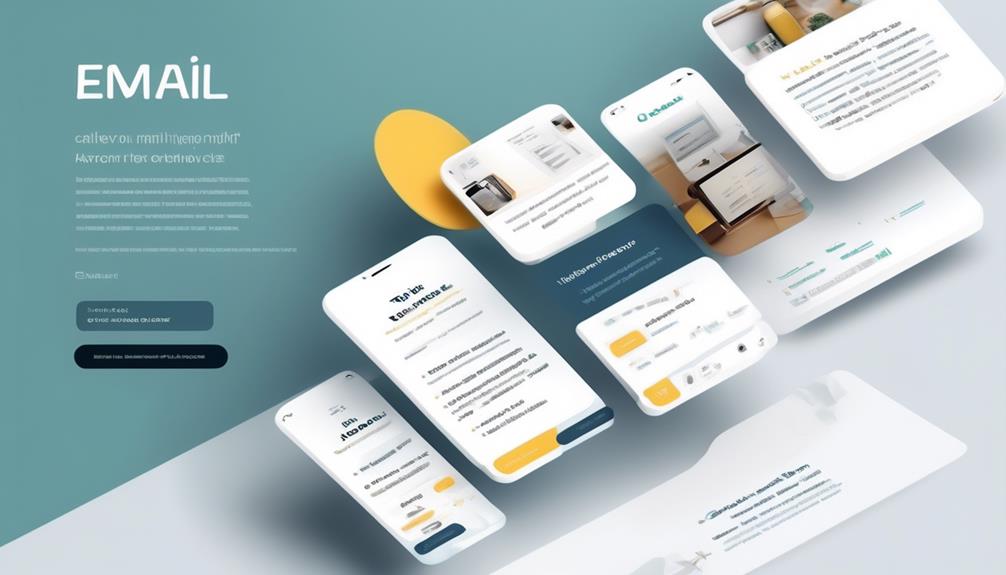
To prompt immediate engagement, ensure that the call to action clearly and visually stands out within the email design. The best email marketer understands the importance of a compelling call to action (CTA) in driving recipient engagement.
Using action-oriented language and strategically placing the CTA within the email can significantly impact click-through rates. With the drag and drop editor, creating visually appealing CTAs has become increasingly popular and accessible. Additionally, utilizing merge tags can personalize CTAs for different segments of your audience, leading to higher conversion rates.
It’s essential to provide actionable information within the CTA, clearly stating the desired action, whether it’s making a purchase, signing up for a webinar, or downloading a resource. Testing different CTAs and their placements can help determine the most effective approach for your audience.
Lastly, including a link to unsubscribe not only fulfills legal requirements but also builds trust with recipients. By following these best practices, email marketers can create more effective emails that resonate with recipients across platforms like Gmail and Outlook.
How Can Implementing A/B Testing Improve Email Design Practices for 2024 Success?
Implementing and mastering email A/B testing techniques can significantly improve email design practices for 2024 success. By conducting A/B tests on different email elements such as subject lines, calls to action, and images, businesses can gain valuable insights into what resonates best with their audience and optimize their email campaigns accordingly.
Frequently Asked Questions
What Is the Email Trend in 2024?
We’ve noticed a surge in interactive content, animated gifs, and customized visuals in email design. Dark mode email designs are also on the rise.
Personalization is key, with dynamic content tailored to individual reader preferences. These trends are shaping the email landscape in 2024, enhancing engagement and brand differentiation.
The evolving email design practices are geared towards creating immersive and personalized experiences for recipients, driving higher engagement and conversions.
Is Email Marketing Still Effective in 2024?
Yes, email marketing is still effective in 2024. We’ve seen high ROI and strong audience engagement.
Personalized and targeted campaigns are crucial. Incorporating interactive elements and dynamic content enhances engagement and conversions.
AI-driven strategies and automation streamline marketing efforts and improve user experiences. Mobile optimization and responsive design are essential for reaching and engaging audiences.
With these practices, email marketing continues to be a powerful tool for success in 2024.
What Is the Best Email Layout?
We discovered that the best email layout combines an eye-catching header, concise preheader, and a compelling subject line.
It’s like crafting a perfect recipe – the right balance of visual appeal, succinct messaging, and a dash of intrigue.
This layout captivates recipients while guiding them seamlessly through the email content.
What Is the Text to Image Ratio for Emails 2024?
We aim for a balanced text to image ratio of 60% text to 40% images in our emails for 2024. This balance ensures optimal engagement and deliverability.
By using images strategically to support our message and enhance visual appeal, we can create effective email designs.
We also prioritize accessibility by implementing alt text for images, ensuring our message is conveyed even if images are blocked.
Conclusion
In conclusion, implementing these email design practices in 2024 will help boost engagement and elevate email marketing success!
By using a personal sender name, compelling subject lines, clear headers, and concise copy, we can captivate our audience and create captivating campaigns.
Additionally, incorporating high-resolution images, a defined color palette, and a strong call-to-action will further enhance the overall impact of our emails.
Let’s embrace these best practices to elevate our email game and achieve outstanding outcomes!
